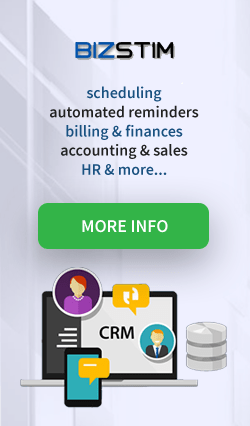
- Understanding the Core of Competitive Analysis
- The Strategic Advantage of Competitor Research
- The Role of Market Intelligence in Competitive Landscape
- Comprehensive Methods for Conducting a Competitive Analysis
- Competitive Analysis: How to Examine Your Competitive Edge
- Employing Competitor Analysis Tools for In-Depth Insights
- Write a comment
Competitive analysis serves as the cornerstone of strategic planning within the business ecosystem. This systematic approach is essential for any company seeking to carve out a sustainable position within its marketplace. Through the meticulous scrutiny facilitated by competitive analysis, businesses garner valuable insights into competitors' operations, from product offerings to intricate sales and marketing tactics.
In today's market, competitive intelligence goes beyond basic monitoring. It utilizes various analysis tools to understand the competitive landscape comprehensively. This informs strategic decisions like product development, pricing, and market entry. When combined with market analysis, it reveals opportunities for growth, innovation, and differentiation.
Competitive intelligence is an ongoing strategic necessity, adapting to changing market conditions and consumer preferences. It provides foresight to maintain and enhance market share, enabling businesses to react and anticipate future developments.
KEY CONCEPTS
- Competitive analysis is crucial for accurately gauging a company's market position and strategic planning.
- It involves thorough research and application of competitor analysis tools for in-depth market insights.
- Competitive landscape analysis provides a broader view of industry trends and benchmarks for performance.
- Continuous market analysis is key to adapting to dynamic market conditions and preserving competitive intelligence.
- Competitive analysis enables businesses to recognize opportunities for differentiation and capture unmet market needs.
- A proactive approach to competitive intelligence can significantly influence a company's ability to secure and grow its market share.
Understanding the Core of Competitive Analysis

Engaging in competitor research is not a one-time task, but an ongoing strategic approach that informs the development of robust sales strategies and marketing initiatives.
Defining Competitive Analysis within Industry Parameters
When embarking on competitive analysis, businesses must first establish the boundaries and benchmarks relevant to their industry. This involves assessing various market metrics to discern where a company stands in comparison to its peers and how it can differentiate itself.
Whether it's service quality, product innovation, or customer engagement, understanding these parameters is crucial to crafting unique value propositions that resonate with the target audience.
Recognizing the Role of Competitive Analysis in Business Growth
Competitive analysis acts as a linchpin in the mechanism of business growth. It pushes a business to look beyond its own operations and to learn from the successes and failures of its competitors.
This holistic view provides invaluable knowledge that can be used to refine marketing strategies, enhance customer satisfaction, and ultimately drive revenue. Such competitor assessments are the compass by which a business can navigate the competitive waters, ensuring they stay ahead of the tide.

Identifying Both Direct and Indirect Competitors
Direct competitors are those offering similar products or services within the same geographic locale and vying for the same customer base as your own business.
Indirect competitors, although they may not clash head-on for the same customer dollar, satisfy the same needs with different products or services, and thus cannot be ignored.
Recognizing the different roles these entities play in the competitive ecosystem is essential for tailoring effective business strategies.
An undying vigilance and continual updating of your company's competitive analysis is vital, as the market dynamics can pivot without warning, potentially disrupting the competitive equilibrium.
In the realms of commerce and industry, a profound comprehension of the competitive landscape is not just advantageous; it is imperative for survival and growth.
Delving into competitive market analysis provides critical insights into business competition, enabling companies to articulate and amplify their competitive advantage.
The Strategic Advantage of Competitor Research

Exploring the terrain of your business landscape through comprehensive competitor research lays the groundwork for carving out a substantial strategic advantage. In the realm of competitive intelligence, knowledge is power, and in-depth insights into competitor activities inform critical business maneuvers.
To attain these strategic heights, companies must leverage effective competitor analysis tools. Such tools facilitate an enhanced understanding of the market, inform product innovations aligned with observed market gaps, and amplify the effectiveness of sales strategies. An ongoing commitment to industry benchmarking positions businesses not just to react to the present but to proactively shape the future.
Key aspects of competitor analysis:
- Product Offerings: Scrutinizing competitor product lines for features, benefits, and pricing structures.
- Marketing Strategies: Monitoring how competitors communicate with their audience and the narratives they create.
- Content Engagement: Measuring the traction competitors' content receives, indicating audience interest and engagement levels.
- Technological Adoption: Assessing the digital tools and innovative technologies that give competitors an operational edge.
A precise SWOT analysis distills this information down to actionable insights, providing clarity on where competitors are excelling or faltering. This understanding is pivotal for a company to navigate the competitive landscape with confidence and acuity.
| Category | Competitor Analysis Tool Examples | Strategic Benefits |
|---|---|---|
| Market Analysis | SEMrush, Ahrefs | Identifies keyword opportunities and traffic sources. |
| Social Media Monitoring | Brandwatch, Hootsuite Insights | Provides real-time data on customer sentiment and brand perception. |
| User Behavior Analytics | Hotjar, Crazy Egg | Offers insights into user experience and conversion funnel optimization. |
| Technological Tracking | BuiltWith, Datanyze | Reveals the technology stacks and tools used by competitors. |
The Role of Market Intelligence in Competitive Landscape

Market intelligence is a pivotal factor in the scope of assessing the competitive landscape of any business. It provides insightful data that further business acumen, enhancing the strategic approaches to market share acquisition and product positioning. A nuanced understanding of market intelligence not only aids in comprehending current standings but also in anticipating future market conduct.
Evaluating Market Share and Industry Benchmarking
Effective evaluation of market share is critical; it serves as a direct indicator of a company's penetration and success within its industry. Coupled with industry benchmarking, firms can compare their operational performance against others, highlighting areas ripe for improvement and competitive leverage.
Utilizing Market Analysis to Enhance Competitive Intelligence
An integral ingredient to fortifying competitive intelligence, market analysis is indispensable for businesses striving to outperform competitors. It involves the dissection of industry data which, when analyzed, births a greater understanding of where a company can carve its competitive edge.
Assessing the Competitive Environment through Market Trends
Staying vigilant to market trends, businesses can proactively respond to evolving consumer demands and emerging market conditions. This assessment facilitates companies to preemptively pivot their strategies, ensuring sustained relevance and competitiveness within a fluctuating marketplace.
| Aspect | Importance | Method of Evaluation |
|---|---|---|
| Market Share | Indicates level of dominance in the market | Sales data, Revenue comparison |
| Industry Benchmarking | Helps set actionable goals based on industry standards | Performance metrics, KPI comparisons |
| SWOT Analysis | Reveals strengths, weaknesses, opportunities, and threats | Internal review, External industry trends |
| Market Trends | Enables adaptive and proactive business strategies | Consumer behavior studies, Trend forecasting |
Comprehensive Methods for Conducting a Competitive Analysis

To maintain a competitive advantage in today's market, businesses must utilize a range of methods for conducting a thorough competitive analysis. By evaluating their competitors through various lenses such as market share, strategies, and overall presence, companies are able to gain valuable competitive intelligence that guides strategic decision-making.
An outline detailing the steps required for a multifaceted examination of the competitive landscape:
- Identify Competitors: Start by identifying both direct and indirect players in the market to understand the full scope of the competition
- Analyze Competitor Offerings: Detail the products or services offered by each competitor to pinpoint opportunities for differentiation.
- Assess Market Position: Conduct a market analysis to determine each competitor's position, strategies adopted, and the level of threat they pose.
- Perform a SWOT Analysis: Evaluate the strengths, weaknesses, opportunities, and threats (SWOT) for a clearer understanding of competitive positioning
- Examine Pricing Strategies: Uncover how pricing affects the market dynamics and where your business can be competitive on price without compromising value.
- Evaluate Sales and Distribution Channels: Investigate how competitors reach their customers, which can reveal actionable insights into market entry or expansion.
- Analyze Technological Adoption: Technological advancements can be a significant differentiator; assess the technological trends competitors are adopting to stay ahead.
- Review Content and Social Media Strategy: Social media presence and content marketing strategies provide insights into brand positioning and customer engagement tactics.
Each of these pillars forms an essential part of the mosaic that is competitive intelligence. Executing this intricate process enables businesses to carve out a unique niche and strategically maneuver for improved market share and profitability.
| Aspect of Analysis | Benefit | Tools/Methods |
|---|---|---|
| SWOT Analysis | Clarifies internal and external strategic factors | SWOT templates, Brainstorming sessions |
| Market Share Analysis | Gauges performance compared to competitors | Market reports, Analytics software |
| Technological Adoption | Identifies innovation opportunities | Technology trend analysis, R&D reviews |
| Content Strategy Evaluation | Enhances customer engagement and brand presence | Content audits, Social listening tools |
Ultimately, a well-rounded competitive analysis will reveal actionable strategies that can influence the growth of a business.
By comprehending the competitive environment through ongoing evaluation, businesses not only anticipate shifts in the industry but also respond with agility, thus sustaining a long-term competitive advantage.
Competitive Analysis: How to Examine Your Competitive Edge

Gaining a competitive edge requires not just the accumulation of competitive intelligence but the ability to parse through and act on the information with precision. A successful business strategy hinges on understanding not only your position in the market but also that of your competitors.
To expertly navigate the competitive analysis process, you'll need efficient competitor analysis tools, a keen sense for details that offer you a competitive advantage, and the agility to pivot your strategies in response to market share fluctuations.
Breaking Down the Competitive Analysis Process
The process starts with identifying key players in the market. These include direct competitors offering similar products or services within your space, indirect competitors providing alternative solutions, and potential new entrants that could disrupt market dynamics.
Once identified, it's imperative to assess their strategies through a multi-dimensional lens, focusing on their business operations, market positioning, and customer engagement.
| Competitive Factor | Company A | Company B | Company C |
|---|---|---|---|
| Market Share | 35% | 30% | 25% |
| Pricing Strategy | Premium | Competitive | Cost Leader |
| Brand Perception | Well-Established | Upcoming | Niche |
| Technological Innovation | Industry Leader | Fast Follower | Limited |
| Customer Satisfaction | High | Medium | Variable |
Gathering and Interpreting Competitor Data Effectively
In dissecting the data mined via various competitor analysis tools, the goal is to sift through quantitative metrics such as pricing structures, market presence, and financial health, along with qualitative aspects like brand strength and customer loyalty.
The art of interpreting this amalgamation of data lies in pinpointing opportunities for differentiation and leveraging untapped areas of the market to your advantage.
Translating Analysis Into Strategic Business Decisions
Finally, the critical transition from intelligence to action determines the efficacy of the analysis. Harnessing insights to forge impactful business strategies can mean the difference between capturing increased market share or falling behind. Decisions must be forward-thinking, rooted in competitive intelligence, and tuned to the evolving demands and opportunities of the market.
Employing Competitor Analysis Tools for In-Depth Insights

In the current market where competition is more intense than ever, having a deep understanding of the competitive landscape is critical for any business aiming to secure a competitive advantage.
This is where competitor analysis tools come into play, proving invaluable for businesses that wish to delve deeper into the operational strategies, marketing efforts, and customer engagements of their rivals. By leveraging these tools, companies gain access to a wealth of data regarding market share, feature comparisons, pricing structures, and overall market intelligence.

Competitive intelligence gathered through these tools is not merely about stacking up numbers against each other; it's about uncovering insights that can inform strategic business moves. It empowers organizations to identify their unique selling propositions (USPs) and fine-tune their approaches to meet market demands more effectively.
Whether it's adjusting pricing strategies, enhancing product features, or reimagining marketing campaigns, competitor analysis tools provide a structured framework for in-depth analysis. This structure helps businesses pivot and adapt swiftly, turning potential challenges into lucrative opportunities.
Achieving sustainable growth and maintaining a leadership position in the marketplace requires constant vigilance and the ability to adapt to new threats and opportunities as they arise.

By incorporating the consistent use of sophisticated competitor analysis tools, companies can elevate their competitive intelligence and market intelligence capabilities.
This proactive approach ensures that businesses are not just reacting to the changes in the competitive landscape analysis but are anticipating them, guaranteeing a long-term competitive advantage and better ROI on their strategic initiatives.
What are some specific steps or strategies you can implement within your own business to leverage the insights gained and establish a sustainable competitive position in your marketplace?








